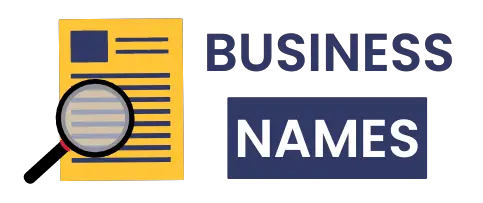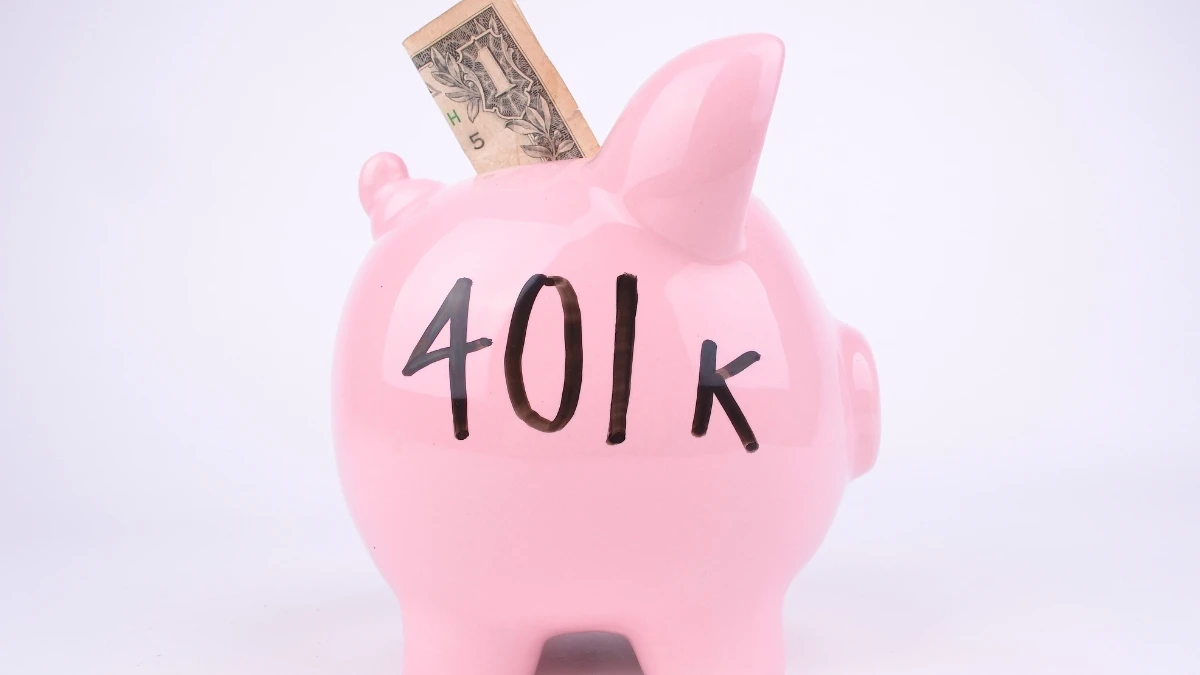You can forget everything you learned about matching your 401(k). That “free money” dogma is one of the most expensive pieces of financial advice you will ever receive. For optimization-focused savers in 2026, blindly maximizing your 401(k) contributions is often a suboptimal strategy. Why. Because your guaranteed debt interest, rising plan fees, and new SECURE 2.0 tax penalties outweigh the speculative growth.
This report provides the hard math and the proven savings roadmap. It reveals exactly when to stop contributing and where to put your money next for guaranteed returns. You will learn the strategic priority list that protects and grows your savings immediately.
High-Interest Debt: The 2026 Guaranteed Match

The ROI Showdown: Debt vs. Investing
Paying High-Interest Debt
Paying off a 24% APR credit card is like earning a 24% return on your money. This gain is 100% risk-free and tax-free.
401(k) Investing (with Match)
*The S&P 500 has a historic average of ~10-12%. This return is variable, not guaranteed, and subject to market risk and fees.
Most money advice says to get the employer match first, even before you pay off consumer debt. This advice forgets a powerful truth. Paying off debt with high interest gives you a return that is guaranteed.
This return is risk-free. It equals the interest rate you avoid paying. The money you put into a 401(k), even with the match, is an expected gain. It can change because of the stock market, inflation, and fees.
The Unassailable Math of Debt Avoidance
The Compounding Reality: Debt vs. Savings
Understand the True Cost of Debt
While investing seems appealing, the guaranteed return from eliminating high-interest debt often far outweighs potential market gains. Credit card APRs average over 22%, creating a constant, growing drain on your finances.
The “Rule of 6%”: If your debt interest rate is 6% or higher, prioritize paying it off before extra risky investments.
For example, to offset a 24% credit card APR, your investments would need to consistently earn more than 24%—a feat rarely achieved by typical index funds (which average 7-10%).
Interest rates are high through 2025. This makes carrying debt cost a lot. Credit card offers in late 2025 show the average interest rate (APR) is 22.83%. The typical rate seen by financial news sites was even higher: 23.99% in August 2025. This rate, almost 24%, is the guaranteed, risk-free return you get when you pay off that debt.
Money experts use the “Rule of 6%.” It means if your debt interest rate is 6% or more, you should pay it off before making extra, risky investments beyond the employer match. When your high-interest debt is four times that 6% rule, paying it off right now is the smartest choice.
Think about this simple comparison: You have credit card debt at 23.99% APR and your job offers a 50% match on contributions up to 6% of your salary. To keep that debt, your 401(k) money would need to earn more than 24% every year, forever, just to beat the debt penalty. Index funds usually earn about 7% to 10% over time. Getting a 24% return to break even against your guaranteed debt cost is nearly impossible.
Compounding debt is a guaranteed loss that never stops, making your debt bigger. Compounding in a 401(k) is good, but it depends on the shaky stock market. Many Americans owe more than $7,300 on credit cards. The interest you save by paying off that debt beats the long-term, unsure growth of extra money put into the 401(k) beyond the initial match threshold.
Table: The Guaranteed Return Calculation Threshold
| Investment Target | Return Type | Example Rate (2025) | Fidelity’s Critical Threshold |
| High-Interest Debt Payoff | Guaranteed, Risk-Free Return | 23.99% (Median APR) | >6% |
| 401(k) Market Investment | Expected, Volatile Return | 7% – 10% (Long-term average) | <6% |
This comparative analysis demonstrates that paying off high-interest debt is not just an expense. It is the single highest-earning, risk-free investment you can make. It is much better than the market risk involved in maximizing the 401(k) contribution.
You should use online Debt vs. Investing Calculators. Put in your exact debt rates and match percentages. This will help you create your own smart, math-based priority plan.
Fee Erosion: When the Match Pays the Administrator

Fees can easily destroy the value of your 401(k) match. Fees act like a secret tax on your money. The first 50% or 100% match is a great return right away. But high fees for running the plan and investing can cancel out that gain over many years. This creates a critical vulnerability in the 401k Match Decision 2026.
Understanding the True Cost of Fees
Look at how low the cost of investing should be. A study found that the average fee (called the expense ratio) for stock funds in a 401(k) was only 0.26% in 2024. If your plan’s total fees are much higher than this number, they pose a threat to how much money you can save in the long run.
Too many fees add up to a huge loss. They can steal a lot of your retirement savings, including the money you got from the employer match. Imagine this: A 50-year-old has $500,000 saved. They add $15,000 every year for 15 years. They earn 7% before fees. If the annual fee is 1.00%—four times the normal amount—it costs them about $230,000 over 15 years.
This magnitude of loss often eclipses the total monetary value of the employer match received over the same period. This proves that putting extra money into a high-fee 401(k) is a poor strategic choice compared to maximizing contributions to a lower-cost alternative such as a low-fee IRA or HSA.
Hunting for Hidden and Indirect Fees
It is hard to find the real total cost because many 401(k) companies hide fees in ways that are not clear. You must find and read your 404(a)(5) Participant Fee Disclosure and the fund prospectus. This is how you find all the charges.
Key stealth fees include:
- 12b-1 Fees and Sub-Transfer Agency Fees: These are secret payments from the mutual fund to the 401(k) company for things like paperwork or marketing. They lower your net returns without being listed clearly.
- Revenue Sharing: Companies hide fees for running the plan inside the fund’s expense ratio. They call this revenue sharing.
- Vague Line Items: Watch out for unclear names like “other administrative fees” or “record-keeping fees.” These often cover hidden costs.
Fiduciary Failure and Litigation Risk
Recent lawsuits show the real money risk of having a poorly managed plan, even today in 2025. While courts sometimes say plan managers were careful, like in the McDonald v. Laboratory Corporation of America Holdings case in 2025, the sheer volume of lawsuits shows that charging too much is a big, ongoing problem.
One company, UnitedHealth Group, had to pay a $69 million settlement in the Snyder case. The case was about keeping bad-performing funds. This proves you cannot rely only on your employer to be smart with investments. Poor fund choices can hurt your growth a lot.
Furthermore, new arguments are emerging over how fees are split up. In the 2025 Smith v. Recreational Equipment, Inc. (REI) lawsuit, a complaint said the plan wrongly charged fees only to people with over $5,000 saved. This made bigger savers pay more to cover the costs of smaller accounts.
While the court tossed out the case, noting that different ways of splitting fees can be fair, the situation highlights how even the method of charging fees can lead to increased costs for successful savers, thereby eating into the gains derived from the match.
If you want the most value from your 2026 401(k) match choice, you must use tools, such as the Future Value of 401(k) Fees Calculator, to model the devastating long-term impact of fees against the industry benchmark.
The Vesting Schedule Trap for High-Turnover Employees
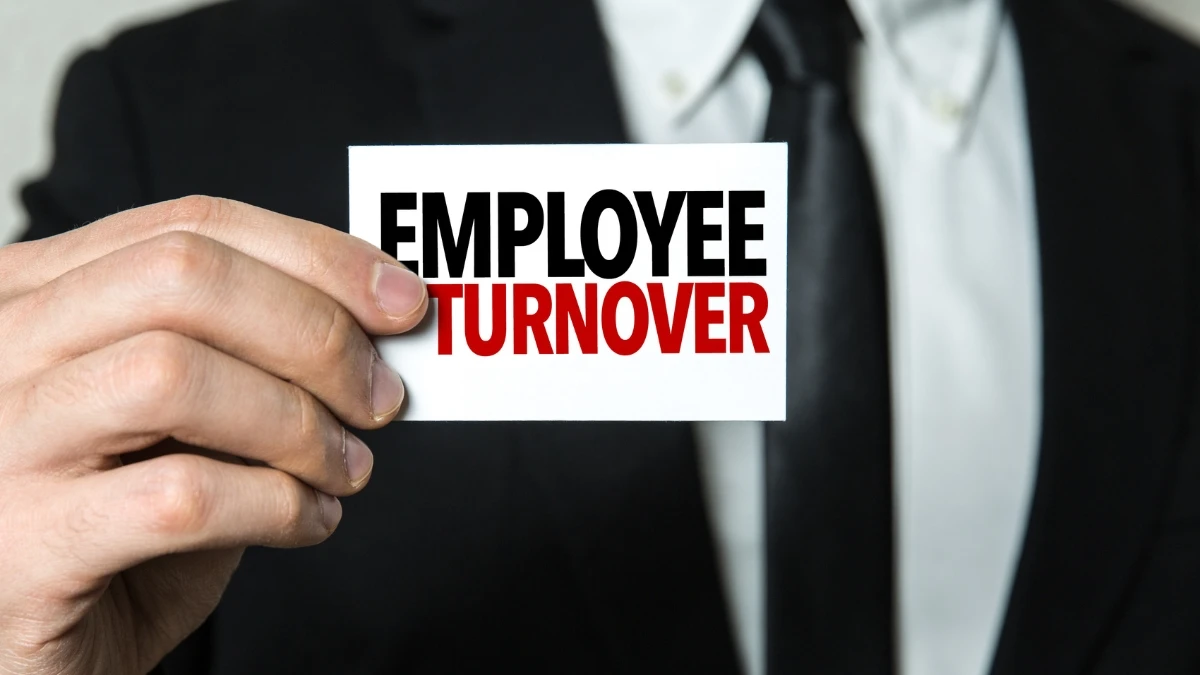
The employer match is not really free money until it is “vested.” That means the funds are legally yours. If you are an ambitious person who often changes jobs for better pay, the vesting schedule turns the promised match into a risky bet. You are betting that you will stay long enough to keep the money.
Quantifying the Forfeiture Risk
Vesting schedules set the rule for when your employer’s money belongs to you. Plans often use cliff vesting (you get nothing until a set time, like three years) or graded vesting (you get a percentage each year for several years). If you leave the job—whether you quit or are fired—before you are fully vested, you lose the part of the employer contribution that is not yet yours.
This risk of losing money is huge and affects many people. It is a massive systemic loss for American workers. Data from 2022 showed that 1.8 million people lost money. This happened because they left their job without being fully vested in the match. The financial magnitude of this systematic loss is staggering: in just 909 single-employer plans studied, the lost money (forfeitures) totaled $1.5 billion in 2022.
The company that runs the plan often wins when you forfeit this money. The money is commonly reused by the plan to pay for the employer’s future contributions. For the individual, putting extra money into a risky vesting plan (e.g., a three-year cliff vesting plan) while expecting a career move within the next 36 months is a gamble. You are taking capital away from accounts that could have been placed in liquid, immediately vested accounts.
Mitigation Strategy: Prioritize Self-Directed Accounts
If you are in a field where people change jobs often, or if you plan to move jobs soon, your 2026 401(k) match strategy must be different. You should put money first into accounts that are 100% yours right away and that you can easily take with you.
The ideal solution is prioritizing your own accounts, such as Traditional or Roth IRAs, immediately after securing the 401(k) minimum match. Contributions to IRAs are made by the individual and are thus 100% vested from day one. This ensures that the savings are portable and protected, regardless of employment tenure.
For high-mobility employees, the decision involves weighing two things. On one side, you have the safe, 100% vested money and control offered by an IRA. On the other side, you have the high-risk gamble of losing a portion of a 401(k) match due to unexpected termination.
Determining the precise cost of forfeiture can be modeled using a vesting schedule calculator to project potential losses based on anticipated separation dates.
2026 Tax Shift: The SECURE 2.0 Penalty for High Earners
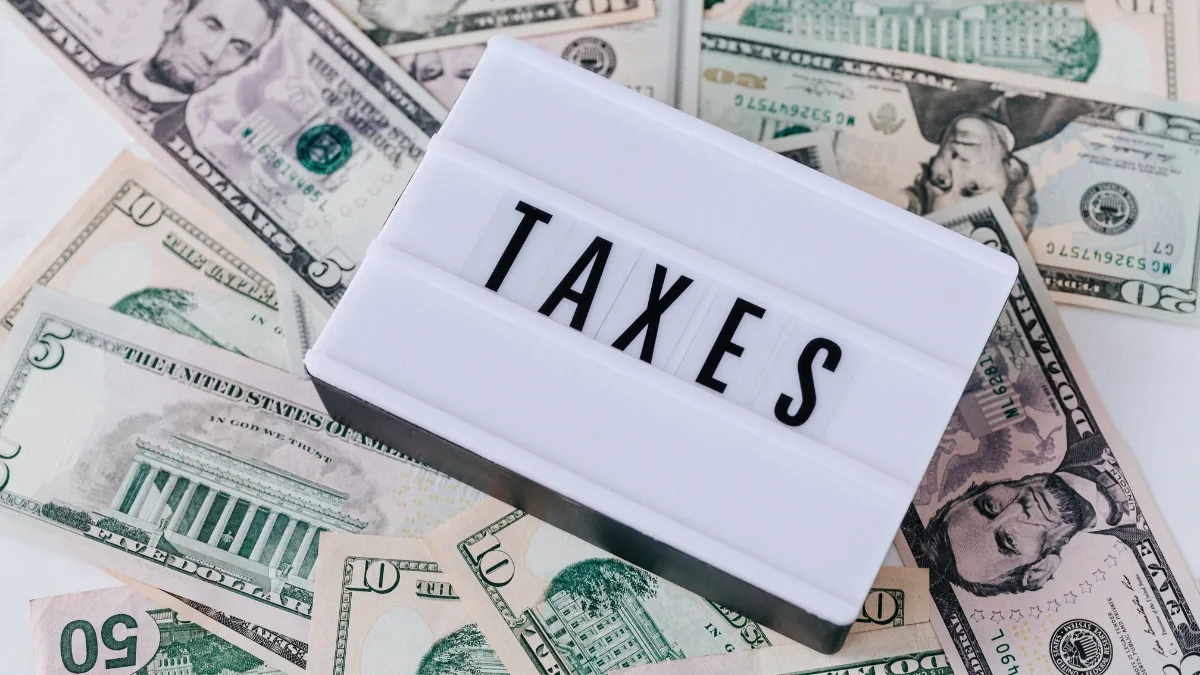
The SECURE 2.0 Act, passed by Congress, changes taxes for high earners starting in 2026. This rule changes how you should think about your 2026 401(k) match choice. This new regulatory change says high earners must make “catch-up contributions” into a Roth (after-tax) account. This effectively takes away a helpful immediate tax deduction.
The Mechanics of the 2026 Mandate
Starting in 2026, participants age 50 and older who earned more than $145,000 last year will lose the ability to make traditional pre-tax catch-up contributions to their 401(k). This group, typically comprising highly compensated employees (HCEs) who frequently maximize contributions, must instead put those extra dollars—projected to be $8,000 in 2026—into a Roth account.
While Roth contributions grow tax-free and are withdrawn tax-free in retirement, the forced shift mandates that participants pay taxes on the catch-up amount in the current year. For high earners, who are typically in their peak earning and tax bracket years, losing the immediate pre-tax deduction on that $8,000 contribution ($7,500 in 2025) is a significant reduction in current-year tax efficiency.
The AGI Management Problem
Losing the pre-tax deduction does more than just raise your tax bill. It complicates managing your Adjusted Gross Income (AGI). AGI management is a critical strategy for high earners. Reducing AGI via pre-tax contributions is essential for:
- Lowering your total taxable income in your peak earning years.
- Ensuring eligibility for other tax credits and deductions that disappear if you earn too much.
- Facilitating advanced strategies, such as the Roth IRA backdoor contribution (which has income limits for direct contributions).
If a high earner aged 50 or older is forced to use after-tax dollars for the catch-up contribution, the relative value of other immediate deduction vehicles increases dramatically. The SECURE 2.0 rule makes a strong case to max out the regular 401(k) deferral (projected at $24,500 in 2026) and then immediately switch your extra savings to other tax-advantaged accounts that still offer a pre-tax deduction, such as the Health Savings Account (HSA).
Table: Projected 2026 Tax-Advantaged Limits and SECURE 2.0 Impact
| Account/Contribution | 2026 Projected Limit (Under 50) | 2026 Catch-Up (Age 50+) | SECURE 2.0 Tax Impact for High Earners ($145K+) |
| 401(k) Employee Deferral | ~$24,500 | N/A | Pre-tax deduction retained (up to the limit) |
| 401(k) Catch-up | N/A | ~$8,000 | Mandatory Roth (Loss of immediate pre-tax deduction) |
| HSA (Family, incl. catch-up) | N/A | $8,750 | Pre-tax deduction retained (no change) |
The Superior Triple-Tax Advantage: Why HSA Beats the Full 401(k) Max
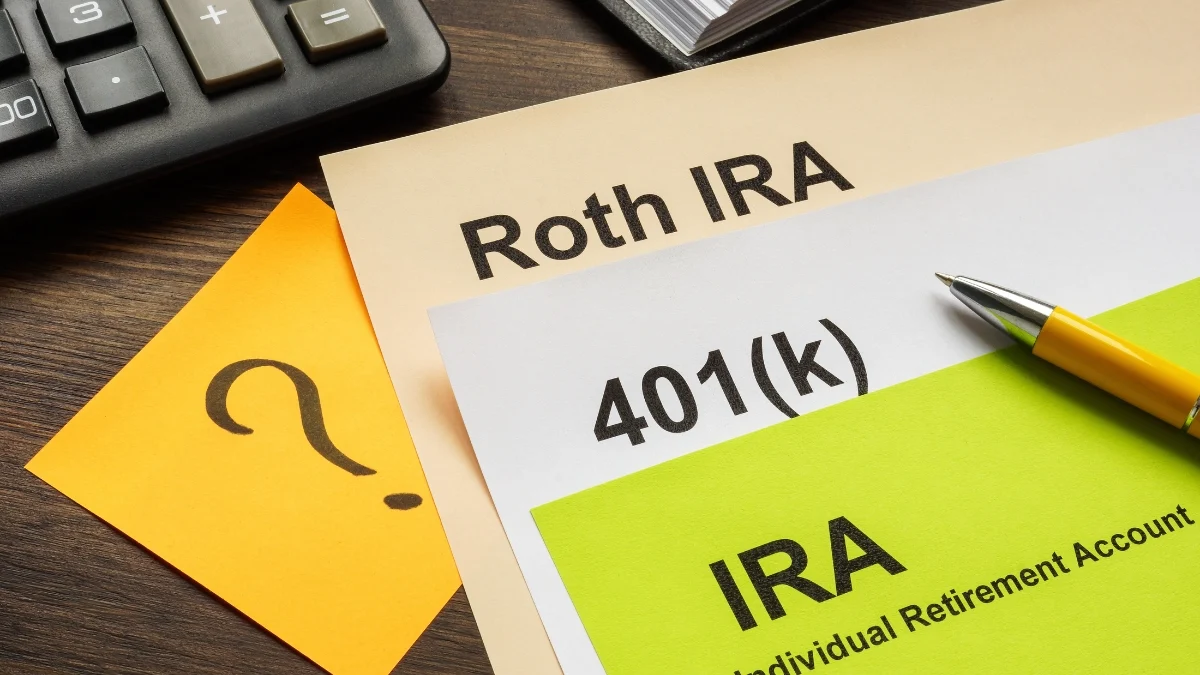
After you get the employer match, smart investors usually think they should max out the rest of their 401(k). But the superior tax characteristics and structural liquidity of the Health Savings Account (HSA) and the Roth IRA demonstrate that maximizing these accounts before the 401(k) deferral limit yields a higher strategic return.
The Supremacy of the HSA
Many people call the HSA the best tax-smart way to save money in the United States. It offers a “triple-tax advantage” that mathematically surpasses even a low-fee, matched 401(k).
The triple-tax advantage means:
- Contributions go in pre-tax (or are tax-deductible).
- Growth within the account is tax-free.
- Withdrawals for qualified medical expenses are tax-free.
This structure allows the HSA to function as a health care savings account now and a supplemental retirement investment vehicle later. After age 65, funds can be withdrawn for non-medical expenses and are taxed only as ordinary income, mirroring a traditional 401(k). Furthermore, unlike the 401(k) catch-up contributions for high earners, the HSA contributions still retain their pre-tax deduction status, providing immediate AGI reduction.
The projected HSA limits for 2026 are significant: $4,400 for an individual and $8,750 for a family plan. For an investor seeking maximum tax efficiency, the optimal strategy is to secure the 401(k) match minimum, then divert subsequent savings to max out the HSA. You capture this superior triple-tax advantage before returning to fill the remaining 401(k) capacity.
Liquidity for Early Retirement (FIRE)
If you want Financial Independence and to Retire Early (FIRE), getting to your money easily is key. The 401(k) is illiquid for pre-retirement use. If you take money out before age 59½, you generally pay a 10% penalty plus income tax, unless you use specific, complicated exemptions, such as Rule 72(t).
In contrast, the Roth IRA offers superior accessibility. It provides a critical “bridge” for early retirement income. Contributions (the principal) to a Roth IRA can be withdrawn tax- and penalty-free at any time, for any reason. This easy access to cash makes the Roth IRA a far more suitable second priority (after the HSA) for those aiming to retire early.
By maximizing the Roth IRA before the remaining 401(k) space, the investor ensures a pool of tax-free, accessible capital that can cover living expenses during the early retirement years, until the age 59½ threshold is met for tax-advantaged accounts.
The optimization hierarchy for 2026 must reflect this structural preference for tax smarts and easy access over the simple desire to maximize the largest savings account you have.
The Fiduciary Headache: Illiquidity and Fees in Alternative Assets

A key risk for your 2026 401(k) match choice is the growing push to put complex, hard-to-sell, and high-fee “alternative assets” into 401(k) plans. While supporters argue that this democratizes access and offers diversification benefits similar to large institutional pension funds, the realities of these investments cause severe problems for plan managers and increase risk for you, the average participant.
Regulatory Promotion and Inherent Risks
In August 2025, an Executive Order aimed to relieve regulatory burdens and legal risk that stop 401(k) plans from offering alternative assets. This order seeks to make it easier to add various private investments. This includes private funds (private equity), real estate interests, and actively managed cryptocurrency funds.
However, the characteristics of these assets clash directly with the principles of low cost and transparency traditionally valued in 401(k) offerings:
- High Fees: Alternative assets often involve complex, layered fee arrangements, including high management fees. These costs can quickly wipe out any potential diversification benefit, particularly in a high-interest-rate environment where outsized returns needed to justify these fees are more challenging to achieve.
- Hard to Sell (Illiquidity and Lock-ups): Private funds typically require long lock-up periods. This limits your ability to access or reallocate your funds. This lack of access is incompatible with the occasional need for early withdrawal or unexpected job loss, which demands easy access to retirement savings.
- Not Clear (Opacity): Private investments lack the transparency of public markets. This makes it difficult for plan participants to accurately gauge performance, risk, and the true value of their holdings at any given time.
Elevated Fiduciary Risk for Participants
New regulatory guidance emphasizes that plan managers must still check these offerings very carefully. They must ensure the investments are appropriate for participants, considering managers’ capabilities and the overall prudence of the investment.
Should plan fiduciaries begin offering these complex, high-fee, illiquid funds in 2026, the potential for participant error and subsequent litigation risk increases. For the smart investor, the presence of these complicated options makes the 401(k) fund menu less transparent and more hazardous to pick from.
Avoiding the maximization of the 401(k) in favor of self-directed IRA and HSA investments—which allow the investor to select simple, low-cost index funds with guaranteed access to cash—is a strategy for risk aversion and superior control.
The Free Money Trap: How Cognitive Bias Skews Your 401(k) Decisions

The reason everyone puts the 401(k) match first is usually not because of math. It is because of fundamental cognitive biases in decision-making, notably the principle of loss aversion. You need to understand this behavioral finance phenomenon when you make your 401k Match Decision 2026.
Loss Aversion and the Perception of Gain
Early work in studying money behavior proved that people feel losses more strongly than they feel gains of the same size. This bias, known as loss aversion, dictates that people prefer avoiding a sure loss over getting a potential gain that is just as big.
The employer match is set up as an instant, guaranteed “gain”—a percentage of salary added directly to the account. This framing uses the psychological preference for receiving a tangible, automatic benefit. The perceived consequence of not capturing the match is the “loss” of free money, which triggers a strong emotional response, overriding rational calculations.
Conversely, paying off high-interest credit card debt (at 23.99% APR) is framed as “avoiding a penalty” or “reducing a loss.” While the avoided loss yields a guaranteed, risk-free return superior to most investment gains, the psychological satisfaction derived from debt repayment is less compelling than the excitement of seeing the “free money” deposited in the 401(k).
Investors are thus prone to accepting the speculative risk of the market and high-interest debt penalties simply to secure the immediate, emotionally rewarding employer contribution.
Reframing the Investment Decision
To use a smart, counter-crowd strategy, you must employ self-control and clear thinking to beat this brain bias. The trick is to consciously reframe the debt repayment decision:
- Instead of viewing debt repayment as just an expense, view it as investing at a guaranteed, risk-free rate of 24% (or whatever the precise APR may be).
- By focusing on the certainty and magnitude of the 24% guaranteed return, the investor can emotionally and logically override the appeal of the 401(k) match (which, after factoring in fees and volatility, may yield a net expected return of 7%-10%).
Your goal is to apply a planned, step-by-step process rather than following feelings that chase quick, unsure gains. Your decisions must be based on the highest net risk-adjusted return, not merely on the psychological allure of the 401(k) match.
Conclusion
The foundational advice to “always maximize the 401(k) match” is a vital starting point. But it represents an incomplete and potentially suboptimal strategy for smart investors operating within the high-rate, complex regulatory environment of 2026. Our analysis reveals three primary threats to the value of the fully maximized 401(k) match: the guaranteed losses incurred by carrying high-interest consumer debt, the money you lose over time from high plan fees and vesting forfeiture, and the strategic tax inefficiency mandated by SECURE 2.0.
For investors aiming for maximum wealth accumulation and early financial independence (FIRE), securing the highest net risk-adjusted return requires a shift in priority. The focus must be on maximizing guaranteed returns and vehicles offering superior tax efficiency and liquidity before committing maximum dollars to the 401(k) beyond the minimum required for the match.
